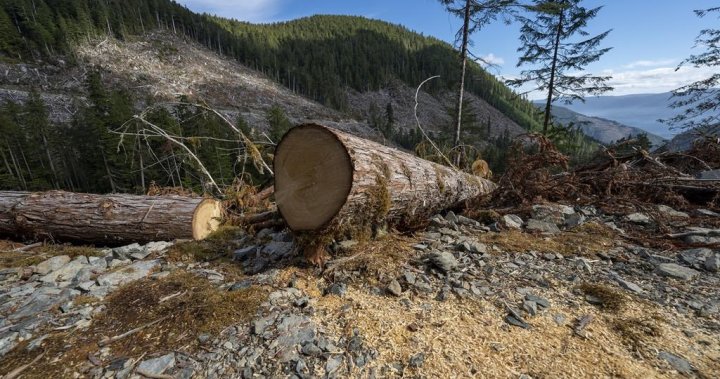Analysis claims that Canada is drastically underestimating the amount of greenhouse gas emissions from the forestry sector, which in some years equals those from the oilsands in Alberta.
“Canada is taking credit for carbon removal from vast forests that have never been logged as a way of masking emissions,” said Michael Polanyi of Nature Canada, which co-sponsored the report.
The paper issued on Tuesday, which was also supported by the Natural Resources Defense Council, makes an effort to determine how much carbon is released by Canada’s forestry industry using data and methods from the federal government.
Nearly all economic sectors are reported on by Environment Canada for direct emissions. But logging is handled through a figure called “combined net flux,” combining natural processes and industrial activity.
According to data from the federal government, carbon emissions from so-called “managed forests” — any forest that is subject to a forestry dispensation, whether or not it is being logged — are roughly balanced by carbon absorption from regrowth.
Natural Resources Canada has long defended its strategy, claiming that it complies with UN directives and is adopted by other nations.
However, the paper claims that the government’s figures are false.
The government denies that industry is to blame for the carbon that wildfires emit. Despite the fact that the forest has never been harvested and human activity has had no impact on its recovery, it does give industry credit for the carbon absorbed by the renewal of the forest.
According to Natural Resources Defense Council spokesperson Jennifer Skene, “it’s like a dieter receiving credit for stuff they don’t eat.”
The authors tried to factor out the impact of wildfires.
Using data, techniques, and assumptions from the government, they tried to identify emissions that might be specifically attributed to industry.
The entire quantity of carbon held in harvested trees was computed. They deducted the carbon that will stay in long-lasting things like building supplies from that. They also subtracted carbon absorbed by trees as they regrow on replanted forest blocks.
The outcome? The study finds that since 2010, forestry has emitted an average of about 85 megatonnes of carbon year, as opposed to roughly even-steven. According to data from the Alberta government, the production of the oilsands emits around 70 megatonnes annually.
Documents from the federal government defend how it determines emissions. They say excluding wildfires from emissions coming from managed forests allows scientists to isolate emissions from human activity.
In a paper published in June, it is stated that “Canada’s (greenhouse gas) inventories distinguish forest emissions and removals in the managed forest owing to human activities from emissions and removals due to wildland fire, forest bug outbreaks, and other natural disturbances.”
“It would be impossible to evaluate how forest management operations affect estimates if such an approach were not adopted. This is because estimates of emissions and removals would be heavily influenced by natural disruptions.
Calculations of the carbon emissions caused by wildfires have shown that Canada’s woods are currently a source of carbon rather than a sink for it. These emissions, though, are not connected to industry.
Wildfires are not included or counted by the government, but after they have occurred, the government gives credit for regrowth, according to Polanyi.
Polanyi claimed that the calculations in the paper are cautious.
They ignore the carbon released when trees are cut down for forestry roads, the carbon released when forest soils are left unharvested after being cut, or failed regrowth.
According to him, the vast majority of Canada’s logging occurs in previously unlogged forest.
The discrepancy is significant because, according to him, Canada cannot achieve its climate change objectives unless it has a clear understanding of its starting point.
According to Polanyi, “people in general recognise that correct reporting of emissions is vital.”
The report’s findings, according to Polanyi, support the claim that emissions from forestry should be subject to the same regulations as those from other sectors of the economy.
“The government needs to implement a plan to cut emissions from this industry. Those emissions should be regulated or included in the output-based pricing system just as other industries are included. ”.
Report: The Canadian government hides forestry-related carbon emissions.

